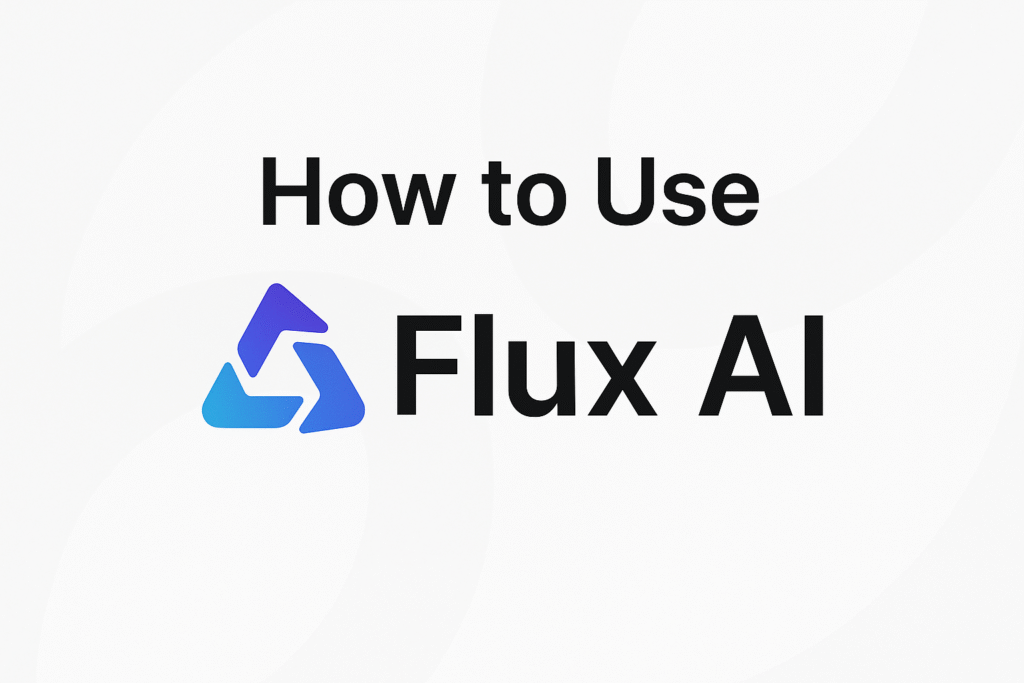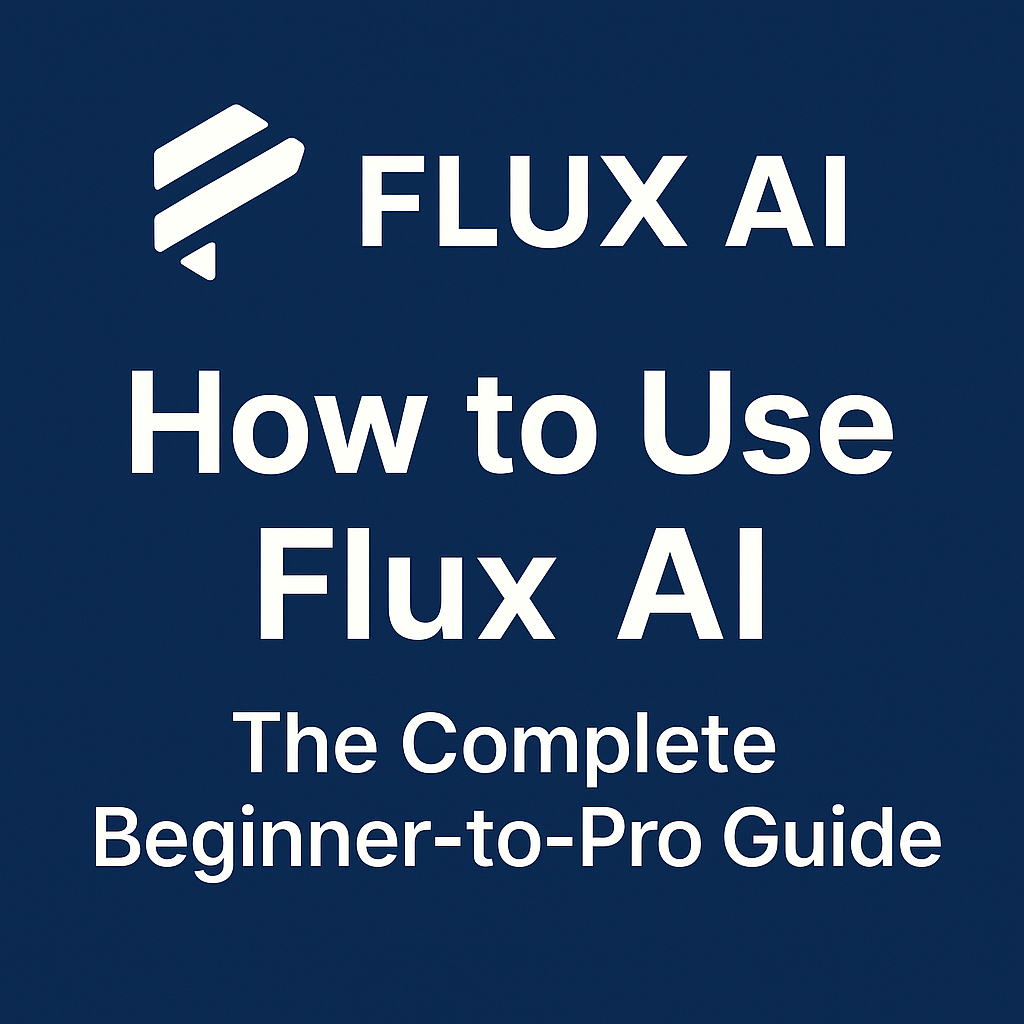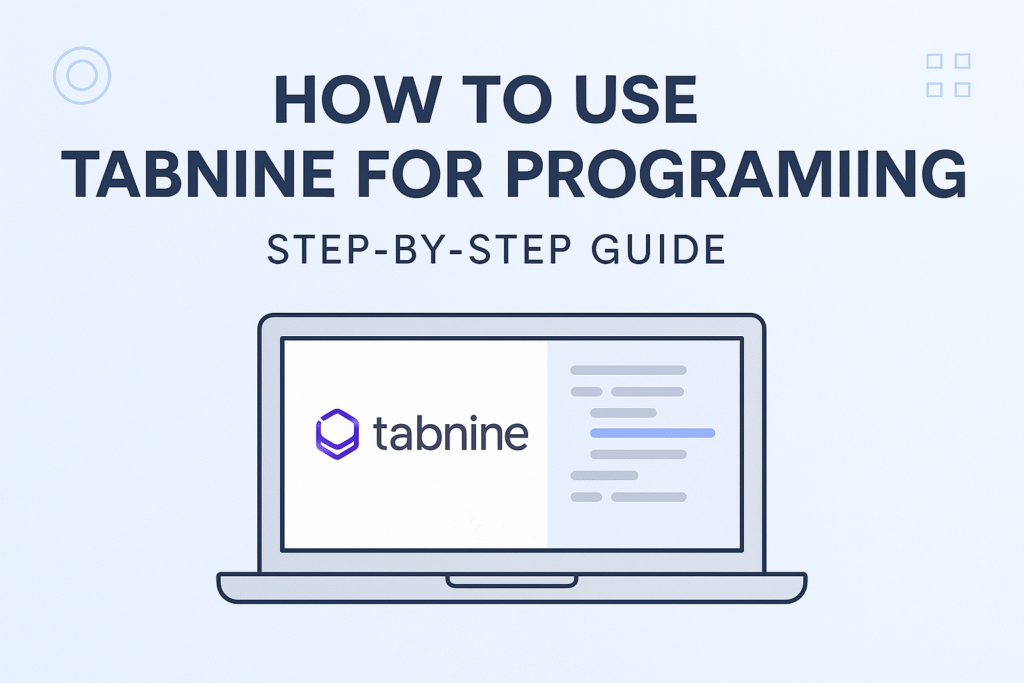
Learn how to use Flux AI step-by-step to streamline your machine learning workflows. Discover installation tips, GitOps integration, deployment automation, and more in this complete guide.
Introduction
The AI revolution has created an explosion of tools aimed at streamlining everything from content creation to complex machine learning workflows. Among these tools, Flux AI has emerged as a powerful platform, especially loved by developers and MLOps teams. But what exactly is this AI, and how can you start using it to maximize your AI development lifecycle?
In this guide, we’ll walk you step-by-step through how to use Flux AI, its core features, benefits, use cases, and some expert tips to help you get the most out of this cutting-edge tool.
What is Flux AI?
Flux AI is an open-source MLOps (Machine Learning Operations) platform designed to automate, manage, and streamline the deployment of machine learning models. It integrates tightly with GitOps workflows and is widely appreciated for its scalability, flexibility, and developer-friendly features.
It helps ML engineers and DevOps teams:
- Automate model training and deployment
- Monitor and manage ML pipelines
- Version and track changes in models
- Collaborate more effectively across teams
This AI simplifies complex ML processes and allows developers to focus more on innovation and less on infrastructure.
Why Choose Flux AI?
Here’s why Flux AI is gaining popularity:
- Open-Source & Cloud-Native: Fully open-source with Kubernetes-native architecture.
- Supports GitOps Workflow: It integrates deeply with Git-based workflows for version control and deployment automation.
- Scalable: Easily scales with your project—whether you’re deploying one model or a hundred.
- Secure & Auditable: this AI keeps a detailed audit trail of all model changes and deployments.

Getting Started with Flux AI
Step 1: Prerequisites
Before you dive into using this AI, make sure you have:
- Basic knowledge of Kubernetes
- A Kubernetes cluster (e.g., via Minikube, EKS, GKE, or AKS)
- Kubectl installed and configured
- A Git repository to manage your deployments
- Optionally, access to a cloud provider (for scaling in production)
Step 2: Install Flux AI
Flux AI can be installed directly using the Flux CLI. Here’s how:
brew install fluxcd/tap/flux
Then, bootstrap this AI with your Git repository:
flux bootstrap github \
--owner=your-github-username \
--repository=your-repo \
--branch=main \
--path=clusters/my-cluster \
--personal
This command sets up Flux on your cluster and connects it to your GitHub repo.
Step 3: Define ML Workflows Using Git
This AI uses GitOps principles. Your Git repository is the source of truth for your machine learning pipeline.
You define:
- Model training jobs
- Evaluation scripts
- Deployment YAMLs
- Configuration files
Example folder structure:
/ml-pipeline
/training
train.py
Dockerfile
/deployment
deployment.yaml
/config
params.yaml
Push your code and config to the GitHub repo, and this AI will automatically sync and deploy changes.
Step 4: Automate Model Training
You can automate training using custom Kubernetes jobs or MLFlow workflows.
Example Kubernetes job YAML:
apiVersion: batch/v1
kind: Job
metadata:
name: model-training
spec:
template:
spec:
containers:
- name: trainer
image: your-dockerhub/train-model:latest
command: ["python", "train.py"]
restartPolicy: Never
Save this as model-training.yaml in your Git repo, and Flux AI will pick it up, deploy the job, and track its progress.
Step 5: Model Evaluation and Validation
Once training is done, evaluate your model using evaluation scripts or automated test jobs.
Store evaluation metrics like accuracy, loss, and confusion matrices in Git or integrate with tools like MLFlow or Weights & Biases.
This AI can trigger alerts or rollback deployments if evaluation fails.
Step 6: Deploy Your Model
Use standard Kubernetes deployment files to serve your model with tools like TensorFlow Serving, TorchServe, or FastAPI.
Sample FastAPI deployment:
apiVersion: apps/v1
kind: Deployment
metadata:
name: model-api
spec:
replicas: 2
selector:
matchLabels:
app: model-api
template:
metadata:
labels:
app: model-api
spec:
containers:
- name: model-api
image: your-dockerhub/model-api:latest
ports:
- containerPort: 80
Create a corresponding service.yaml to expose your model via LoadBalancer or Ingress.
Step 7: Monitor and Optimize
This AI integrates with Prometheus and Grafana for observability. You can monitor:
- Model performance
- API response times
- Deployment success rates
- Resource utilization
Add alerts to notify you of any performance degradation or model drift.
Key Features of Flux AI
1. GitOps for ML
Manage all your pipelines, configurations, and code through Git repositories. Any change you push is automatically applied to your Kubernetes cluster.
2. Multi-Environment Support
You can easily set up multiple environments (dev, staging, production) and promote models across them using pull requests.
3. Continuous Deployment
This AI supports CI/CD pipelines for ML, enabling continuous training, testing, and deployment of models.
4. Security and Policy Management
Use policy-as-code frameworks like OPA (Open Policy Agent) to define who can push changes, deploy models, or access resources.
5. Custom Controllers and Plugins
Extend this AI using custom controllers for your specific ML workflows or integrate with your data pipeline tools.
Best Use Cases for Flux AI
- Automated ML Pipelines: Ideal for businesses that want to automate end-to-end ML workflows using GitOps.
- Team Collaboration: Supports collaborative development for large data science teams.
- Model Governance and Compliance: Ensures every deployment is auditable and controlled.
- Research to Production: Helps data scientists easily transition models from notebooks to production environments.
🔍 Model Comparison Table
Add this after the section where you mention model selection:
| Model Name | Speed | Quality | Best For | VRAM Requirement |
|---|---|---|---|---|
| Flux Schnell | ⚡ Very Fast | Moderate | Rapid prototyping | 4–6 GB |
| Flux Dev | Fast | Good | Social media assets | 6–8 GB |
| Flux Pro | Medium | High | Client-ready designs | 8–12 GB |
| Flux Pro Ultra | Slow | Very High | Final outputs | 12+ GB |
🧠 Prompt Writing Tips for Better Results
Insert this as a new section below your existing prompt example.
🎯 Smart Prompting Tips
- Use Specific Details: Describe colors, environment, style, and subject.
- Mention Art Styles: Try “digital painting,” “cyberpunk,” “Studio Ghibli,” or “Pixar style.”
- Lighting & Mood: Add terms like “cinematic lighting,” “volumetric fog,” or “dramatic shadow.”
Example Upgrade:
❌ Bad prompt: “Robot in city”
✅ Better prompt: “A humanoid robot standing on a skyscraper rooftop at night, neon city lights glowing below, cinematic style, 4K, ultra-detailed”
💼 Real-World Use Cases of Flux AI
Add this after the tutorial section to give context on practical use:
📌 What Can You Use Flux AI For?
- 🎨 Graphic Design: Posters, banners, social media graphics.
- 📱 Marketing: Ad creatives, landing page visuals, A/B testing content.
- 🛒 E-commerce: Product mockups or seasonal image campaigns.
- 🎮 Game Design: Characters, environments, concept art.
⚙️ Advanced Features for Power Users
Create a new section titled: “Advanced Tips”:
- Seed Values: Use a seed number to get consistent outputs.
- Batch Generation: Generate multiple versions (e.g., 4–8) to select the best.
- Negative Prompts (if supported): Try filtering out unwanted elements like “text,” “logo,” or “blurred.”
Tips to Maximize Your Success with Flux AI
- Follow GitOps Best Practices: Use meaningful commit messages, feature branches, and pull requests for traceability.
- Version Everything: Track your datasets, model weights, configs, and scripts.
- Monitor Continuously: Integrate real-time dashboards for visibility into model performance and infrastructure.
- Automate Testing: Use tools like pytest or Great Expectations to test your models before deployment.
- Document Your Workflows: Keep README files or markdown docs inside your repo to help your team understand the process.
Flux AI vs Other MLOps Platforms
| Feature | Flux AI | MLFlow | Kubeflow | SageMaker |
|---|---|---|---|---|
| Open Source | Yes | Yes | Yes | No |
| GitOps Support | Excellent | Limited | Moderate | Limited |
| Kubernetes-Native | Yes | No | Yes | Partial |
| Cost | Free | Free | Free | Pay-per-use |
| Customization | High | Medium | High | Low |
This AI stands out for teams that are heavily invested in Kubernetes and GitOps workflows.
Common Challenges and Solutions
| Challenge | Solution |
|---|---|
| Complexity in setup | Use Flux bootstrap to simplify installation |
| Model rollback in production | Use Git commit history and GitOps reverts |
| Monitoring model drift | Integrate with MLFlow or drift detection plugins |
| Scaling inference servers | Use Kubernetes Horizontal Pod Autoscalers (HPA) |
| Secrets management | Integrate with Kubernetes Secrets or tools like HashiCorp Vault |
Conclusion
This AI is not just another tool—it’s a paradigm shift in how machine learning operations are managed. With its GitOps-first approach, Kubernetes-native design, and extensible architecture, it empowers teams to build, deploy, and monitor ML models with confidence and control.
Whether you’re a solo data scientist or part of a large ML team, learning how to use Flux AI will elevate your productivity and help you build smarter, faster, and safer AI systems.
Start your journey with this AI today and transform your ML pipelines into production-grade workflows.
FAQs
Q1: Is Flux AI free to use?
Yes, this AI is fully open-source and free to use.
Q2: Can I use Flux AI without Kubernetes?
No, the AI is designed for Kubernetes-based environments and heavily depends on Kubernetes features.
Q3: Does Flux AI support model versioning?
Indirectly, yes. You version everything (including models) through your Git repository.
Q4: Can I integrate Flux AI with CI/CD tools?
Absolutely. This AI works well with GitHub Actions, GitLab CI, Jenkins, and others.
Q5: Is this AI suitable for large enterprise-scale ML workflows?
Yes. It is highly scalable and supports multi-team, multi-environment configurations
.Q.6: Can I use Flux AI commercially?
Yes, but always check the license terms based on the model used.
Q7: Is there a mobile version of Flux?
Flux AI works well on mobile browsers, but desktop is recommended for best performance.
Q7: Can I run Flux AI locally?
Some models support local execution via GGUF/NF4 formats on powerful GPUs.
Certainly! Based on your interest in this AI, here are some official resources and tools you might find useful:
🔗 Official Flux AI Platforms
- Flux AI – Advanced Image & Video Generation Platform
This platform offers powerful tools for creating stunning images and captivating videos using advanced AI technology.
Visit Flux AI - Flux AI GitHub Repository
Explore the open-source projects and contributions related to Flux AI on GitHub.
Flux AI on GitHub - Flux AI Image Generator Web UI
An AI-powered image generation platform built using Next.js and the Flux.1 AI model.
Flux AI Image Generator - Awesome Flux AI – Curated Resources
A curated list of resources, tools, libraries, and applications related to Flux AI technology.
Awesome Flux AI
- 👉 Best AI Image Generators in 2025
- 👉 How to Create a Cartoon Video Using AI Tools
- 👉 Jasper AI: Writing Smarter in 2025
https://bartatime.com/how-to-use-tabnine-for-programming/



Here, you can find a wide selection of online slots from famous studios.
Visitors can try out traditional machines as well as modern video slots with stunning graphics and interactive gameplay.
Even if you’re new or a casino enthusiast, there’s always a slot to match your mood.
slot casino
The games are available anytime and compatible with desktop computers and tablets alike.
All games run in your browser, so you can get started without hassle.
Platform layout is easy to use, making it quick to find your favorite slot.
Sign up today, and discover the excitement of spinning reels!
Сертификация и лицензии — обязательное условие ведения бизнеса в России, обеспечивающий защиту от непрофессионалов.
Декларирование продукции требуется для подтверждения безопасности товаров.
Для торговли, логистики, финансов необходимо специальных разрешений.
https://ok.ru/group/70000034956977/topic/158835710474417
Нарушения правил ведут к приостановке деятельности.
Дополнительные лицензии помогает усилить конкурентоспособность бизнеса.
Соблюдение норм — залог успешного развития компании.
Ищете подробную информацию коллекционеров? Эта платформа предлагает исчерпывающие материалы для изучения нумизматики!
Здесь доступны редкие экземпляры из исторических периодов, а также антикварные находки.
Изучите каталог с подробными описаниями и детальными снимками, чтобы сделать выбор .
золотые монеты Китая
Если вы начинающий или профессиональный коллекционер , наши обзоры и руководства помогут расширить знания .
Не упустите возможностью приобрести лимитированные монеты с сертификатами.
Присоединяйтесь сообщества ценителей и следите аукционов в мире нумизматики.
Наш ресурс публикует важные новостные материалы в одном месте.
Здесь представлены события из жизни, науке и многом другом.
Материалы выходят почти без перерывов, что позволяет держать руку на пульсе.
Удобная структура облегчает восприятие.
https://nbcollector.ru
Каждая статья предлагаются с фактчеком.
Целью сайта является достоверности.
Оставайтесь с нами, чтобы быть в курсе самых главных событий.
Szukasz bezpłatne gry online na naszej stronie ?
Oferujemy wszystkie kategorie — od RPG do sportu!
Korzystaj bez pobierania na komputerze lub telefonie .
Popularne tytuły aktualizowane codziennie .
https://www.preparingforpeace.org/najlepsze-kasyna-online/
Dla dzieci , zaawansowane — każdy znajdzie coś dla siebie !
Sprawdź już dziś .
Matchmaking services provide a innovative approach to connect people globally, combining intuitive tools like photo verification and compatibility criteria.
Key elements include video chat options, social media integration, and detailed user bios to enhance interactions .
Advanced algorithms analyze preferences to suggest potential partners , while account verification ensure trustworthiness.
https://live8.us/dating/a-celebration-of-natural-desire-and-fertility/
Many platforms offer premium subscriptions with enhanced visibility, such as unlimited swipes , alongside profile performance analytics.
Looking for long-term relationships, these sites cater to diverse needs , leveraging AI-driven recommendations to optimize success rates .
Перевозка товаров из КНР в РФ осуществляется через железнодорожные маршруты , с таможенным оформлением на в портах назначения.
Импортные сборы составляют от 5% до 30% , в зависимости от типа продукции — например, готовые изделия облагаются по максимальной ставке.
Для ускорения процесса используют альтернативные схемы, которые быстрее стандартных методов , но связаны с дополнительными затратами.
Доставка грузов из Китая
При официальном оформлении требуется предоставить паспорта на товар и декларации , особенно для сложных грузов .
Сроки доставки варьируются от нескольких дней до месяца, в зависимости от вида транспорта и эффективности таможни .
Общая цена включает транспортные расходы, таможенные платежи и комиссии за оформление , что влияет на рентабельность поставок.